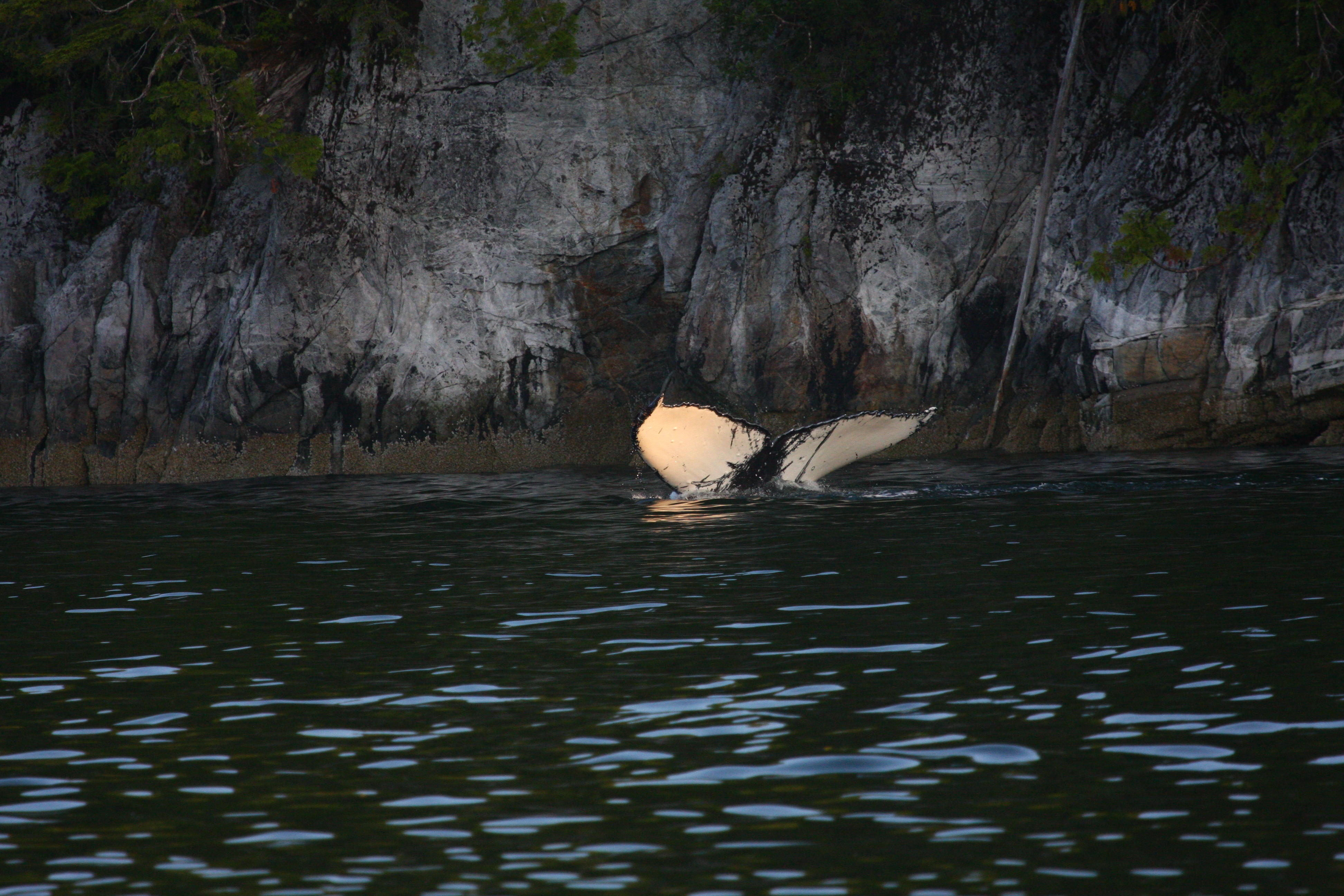Article by Sam Watson, current BIC student
Day one on the job. Early morning fog drifts across glassy water. The sun beams weakly through a cloud, enough to provide a breathtaking sunrise… the beauty of which is somewhat lost upon me, as I am only one cup of coffee into my required three. I sip slowly at cup number two as the boat rumbles its way towards the start of the day’s work, the grogginess fading in the face of the wind’s cool bite.
We arrive at where we’ll start transecting for the day and my partner [Will Bostwick] and I clamber up onto a small wooden platform built around the ship’s mast, hook ourselves in (safety first, kids), and begin sweeping the water with our binoculars. We’re looking for seabirds, small marine mammals, and, the big one: any sign of a whale.
Less than twenty minutes later, such a sign appears, hanging above the water like an ethereal spirit- a whale’s blow. I suppress my excitement as we call it back to the captain, a Ph.D candidate at Scripps Institute named Eric Keen, and he decides to execute a focal follow on this particular humpback after entering the data we gave him. [Will] explains to me this means we’ll break off from the transect and attempt to get an identification shot on the whale with our high powered cameras. Essentially, we’ll wait for the whale to dive and its fluke to rise out of the water. Each humpback’s fluke has distinctive markings we match to a photo database to identify it.
As we approach the behemoth, all I can see of its actual body is a low, dark grey line of flesh that rises up into the characteristic hump and dorsal fin. We’re still about three hundred meters out, so I wasn’t expecting to get a good view, but I’m still slightly disappointed. I’d heard so much about how charismatic and majestic these creatures were; was this all I’d see of them for the next month?
The whale blows several more times, moving calmly along the sheer granite shore of the channel, and we get within 100 meters. I’m more impressed with it now, but even so…
Then the back of the beast arches high above the water, looking for all the world like a prehistoric sea serpent, and a fluke, the width of which is nearly three times my height, rises straight up. The whole thing slips beneath the water with barely a sound, and all I can think is, “oh.”
This is life on the Bangarang, a 37-foot sailboat. You wake up, you drink coffee, and for approximately the next eight hours, you constantly see the most beautiful creatures on earth in one of the most beautiful places on earth. Life while you’re in the Bangarang’s care, needless to say, is amazing. Named after the Lost Boys’ cry of jubilation in the movie Hook, she carries you to sights you never thought you’d see.
She carried me to witness the famed bubble net feeding of the humpbacks, another event that’s nigh indescribable. There’s a group in the Great Bear Sea that’s returned, year after year, to meet up in the most spectacular feeding frenzy the natural world has to offer. The same whales, for over ten years, join underwater, one whale leading the others with haunting songs. They begin to circle a school of fish, slowly releasing bubbles and rising up towards the surface. If you’re lucky enough to have a hydrophone in the water, you can hear the slight changes in tone, pitch, and sound as the whales move, the hiss of bubbles, and then… Then you hear the calling whale deepen its voice, and you can tell they’re getting much higher much faster. You have around two seconds to prepare yourself, and then ten huge mammals are erupting out of the water, massive mouths wide open. The combination of their beautiful song and the sheer size and intelligence of the creatures, all spectacularly on display, was overwhelming.
This is, to some extent, what the BIC can prepare you for, if you give it the opportunity. On the surface, ecological field research and what you’ll be learning over the next four years have little to do with each other. But the surface only shows so much. When you see a whale on the surface, you can only see its back. Stick around long enough, however, and you may see something spectacular- a beautiful fluke, a pectoral fin, a breach, or maybe even bubble net feeding.
The BIC, on the surface, is difficult. The class load is heavy, the workload intense, and the teachers hold you to high standards; but what you’ll learn is worth it all. My time on the boat required attention and analysis. Ecology – particularly when whales are involved, because there’s so much we don’t know about them- asks of the scientist silence. You must sit, be still, and listen to what the ecosystem is telling you. You have to wait for the whales to sing. Let the BIC teach you to listen.
Sam Watson is a senior BIC student in the university scholars major.
Photo: A humpback whale named Coste, preparing to dive on my first full day; ©Eric Keen



